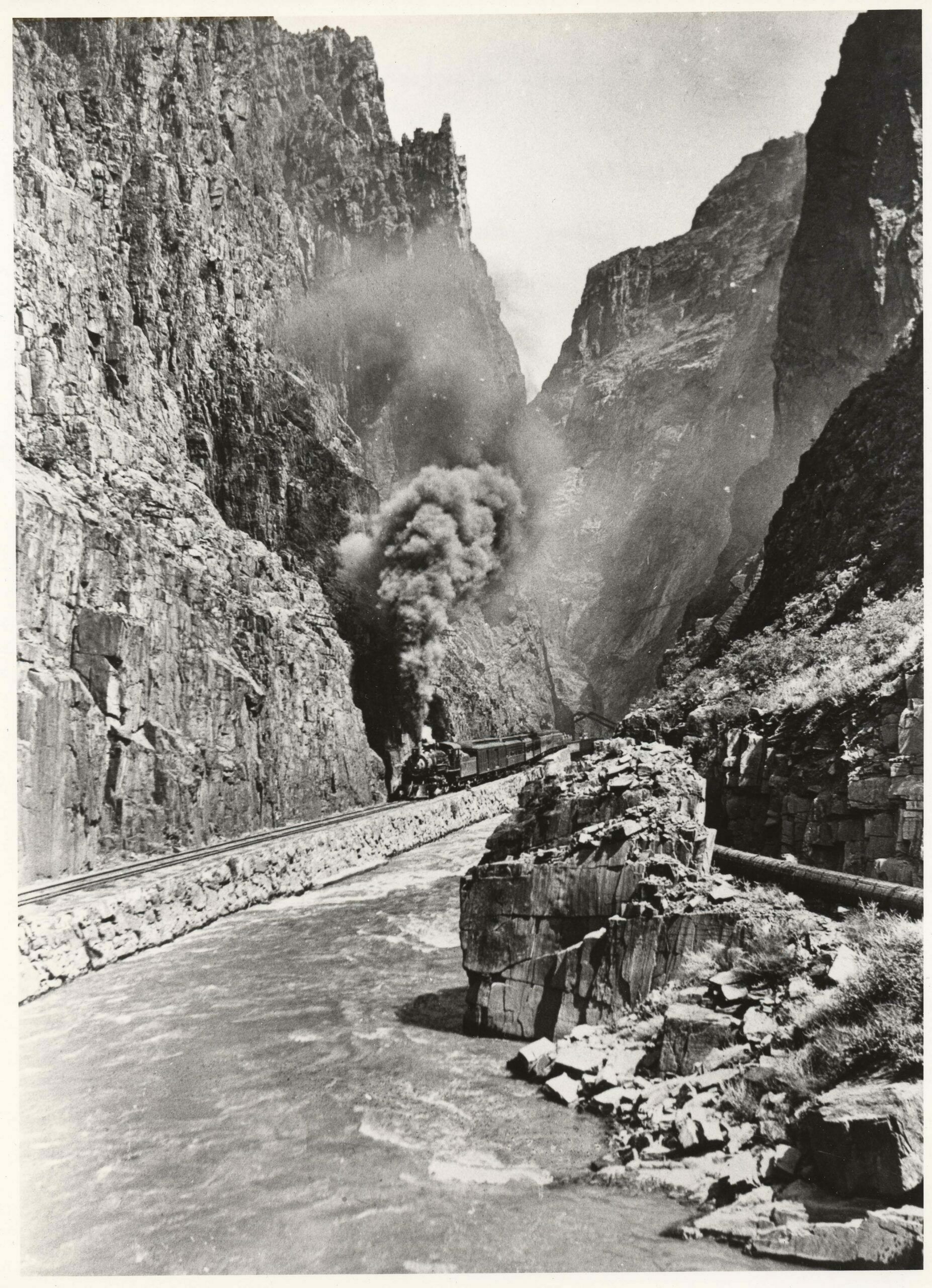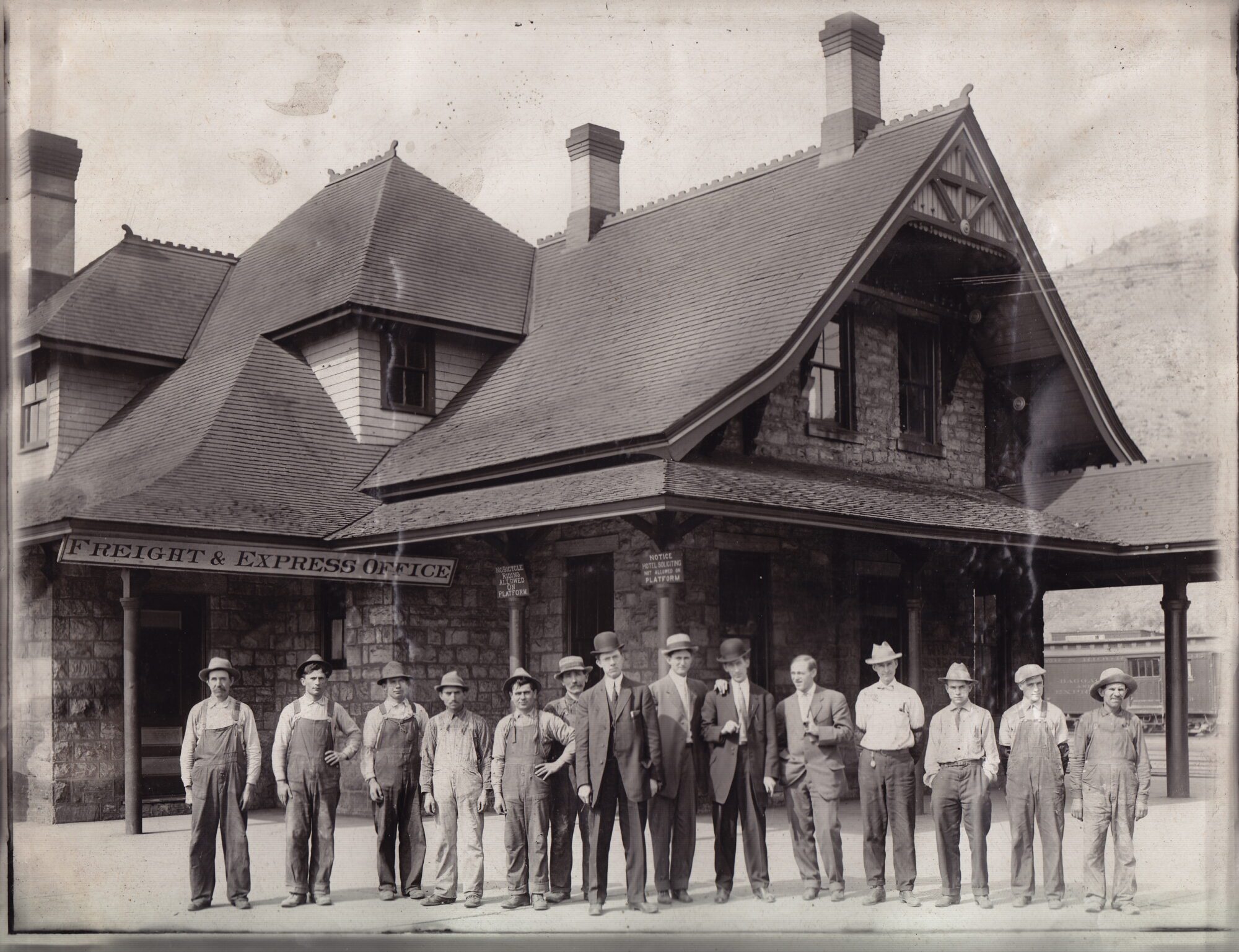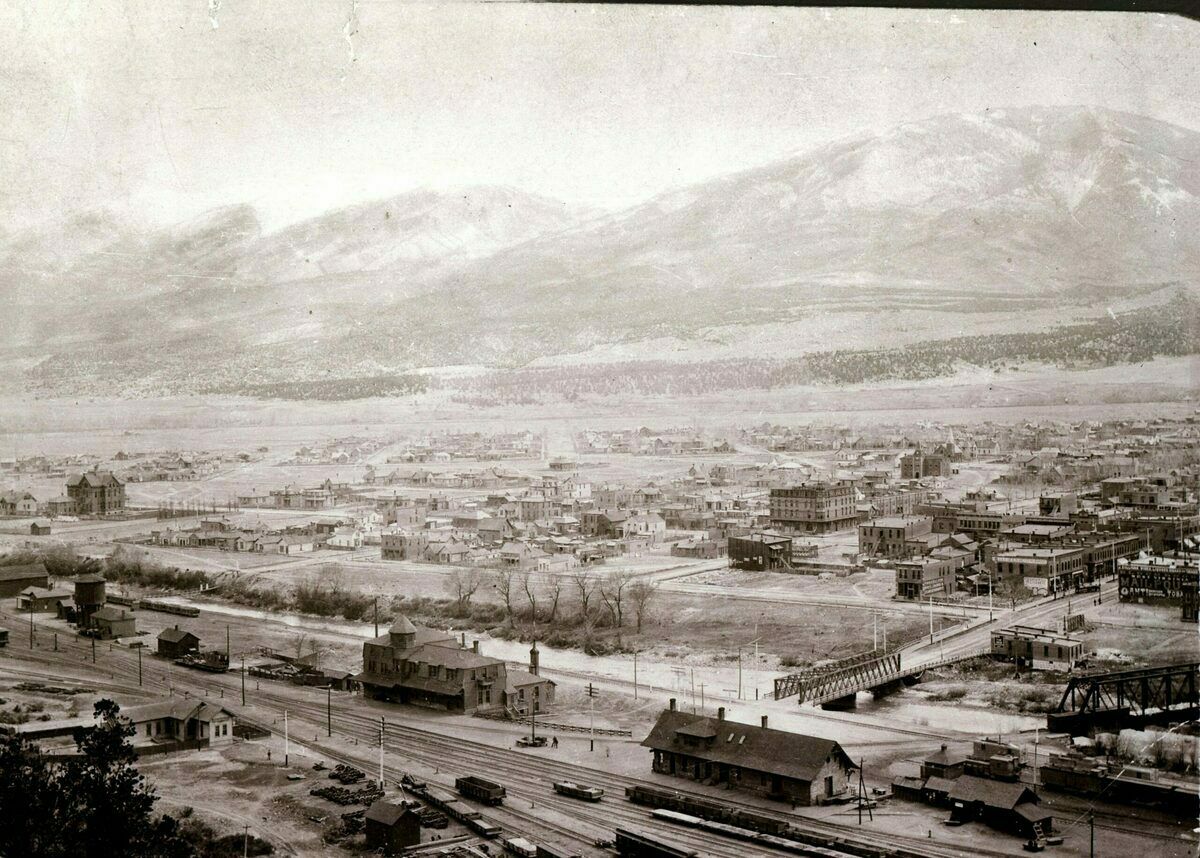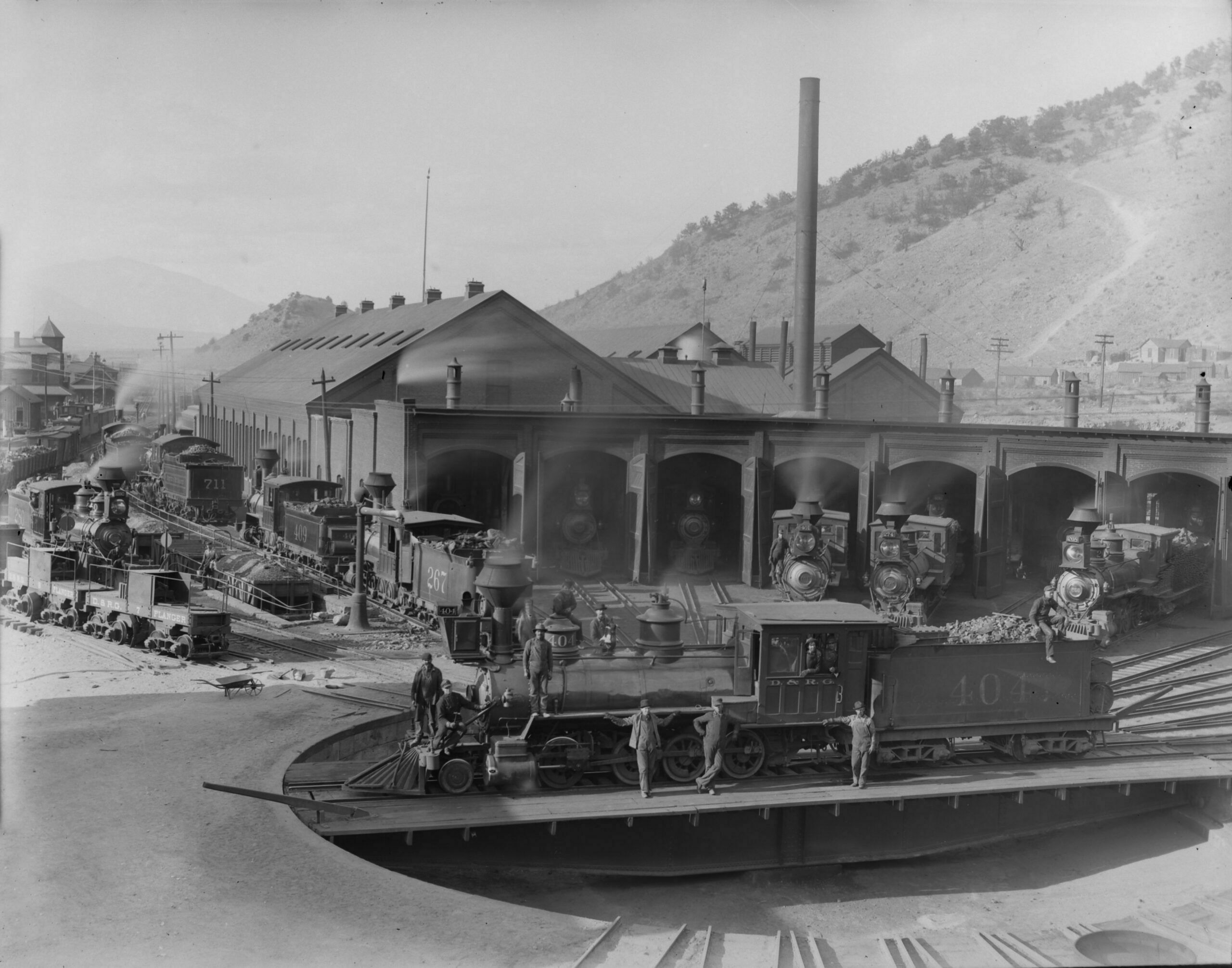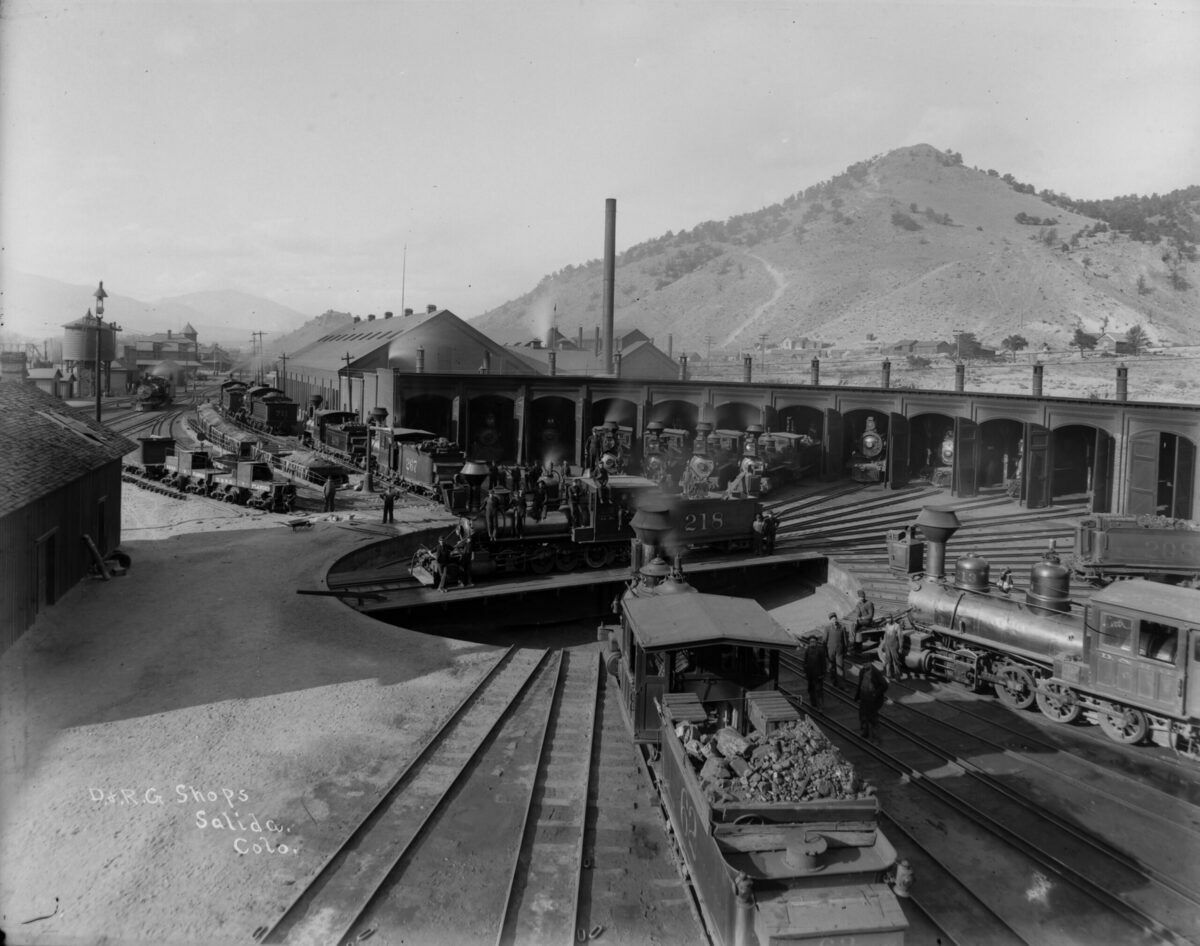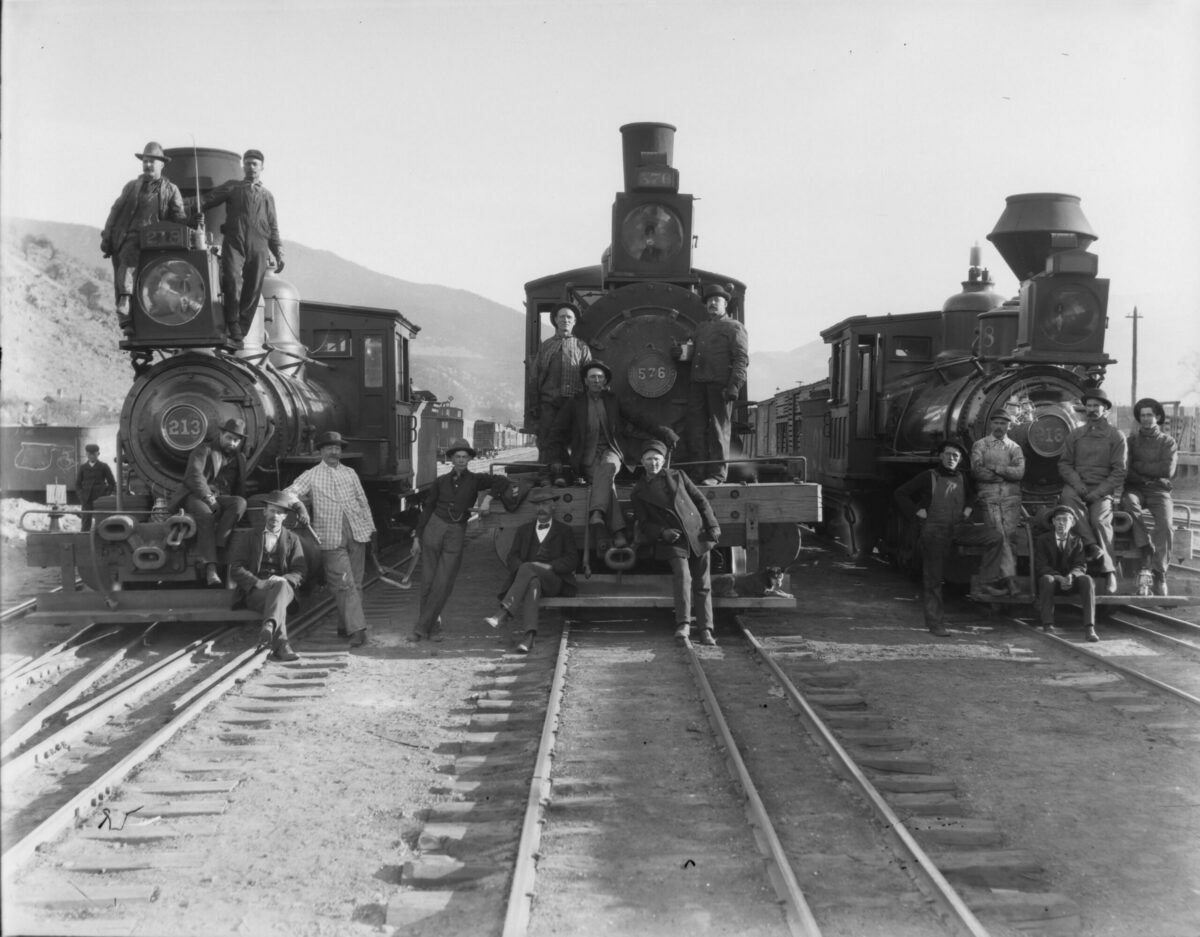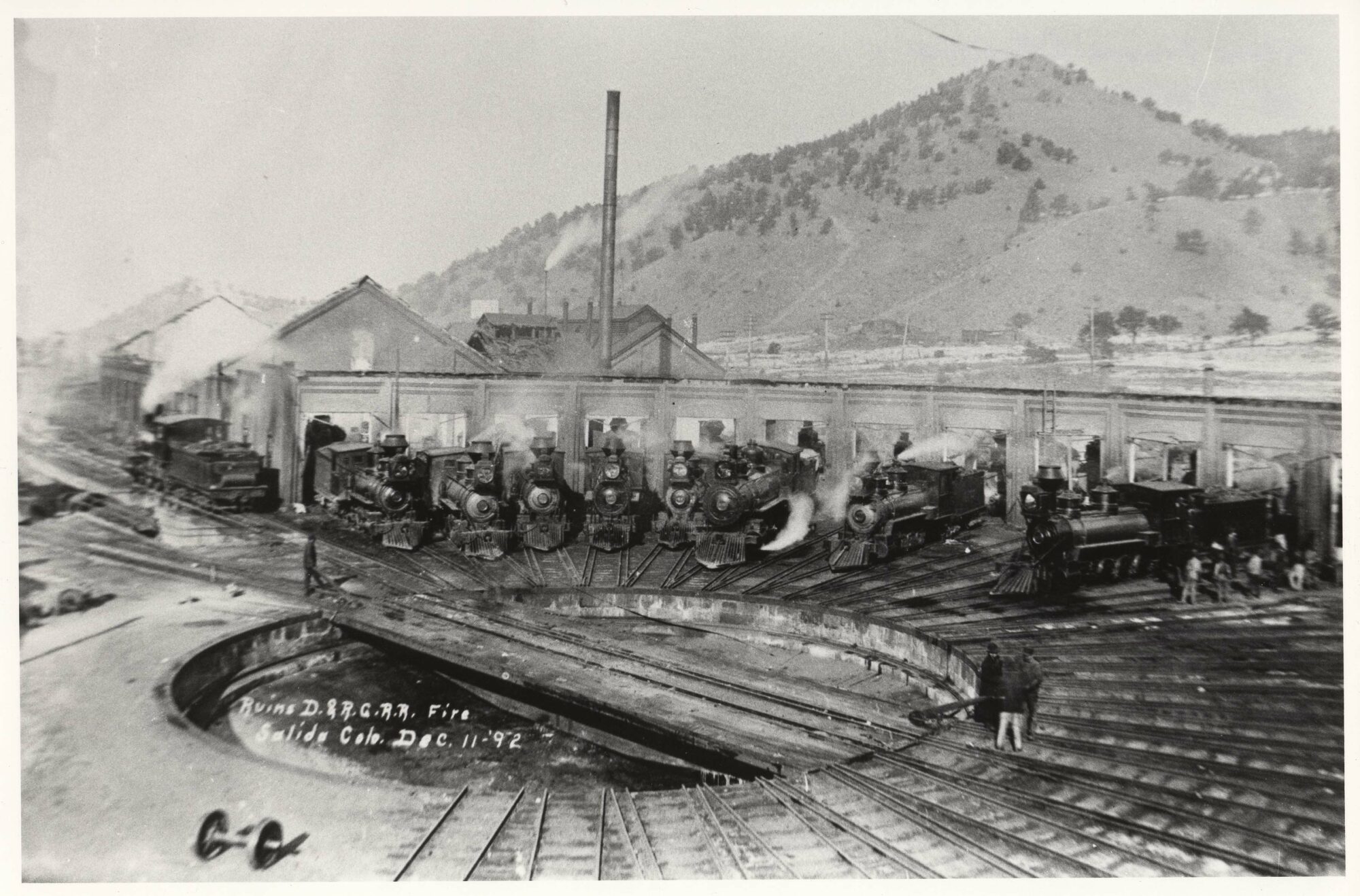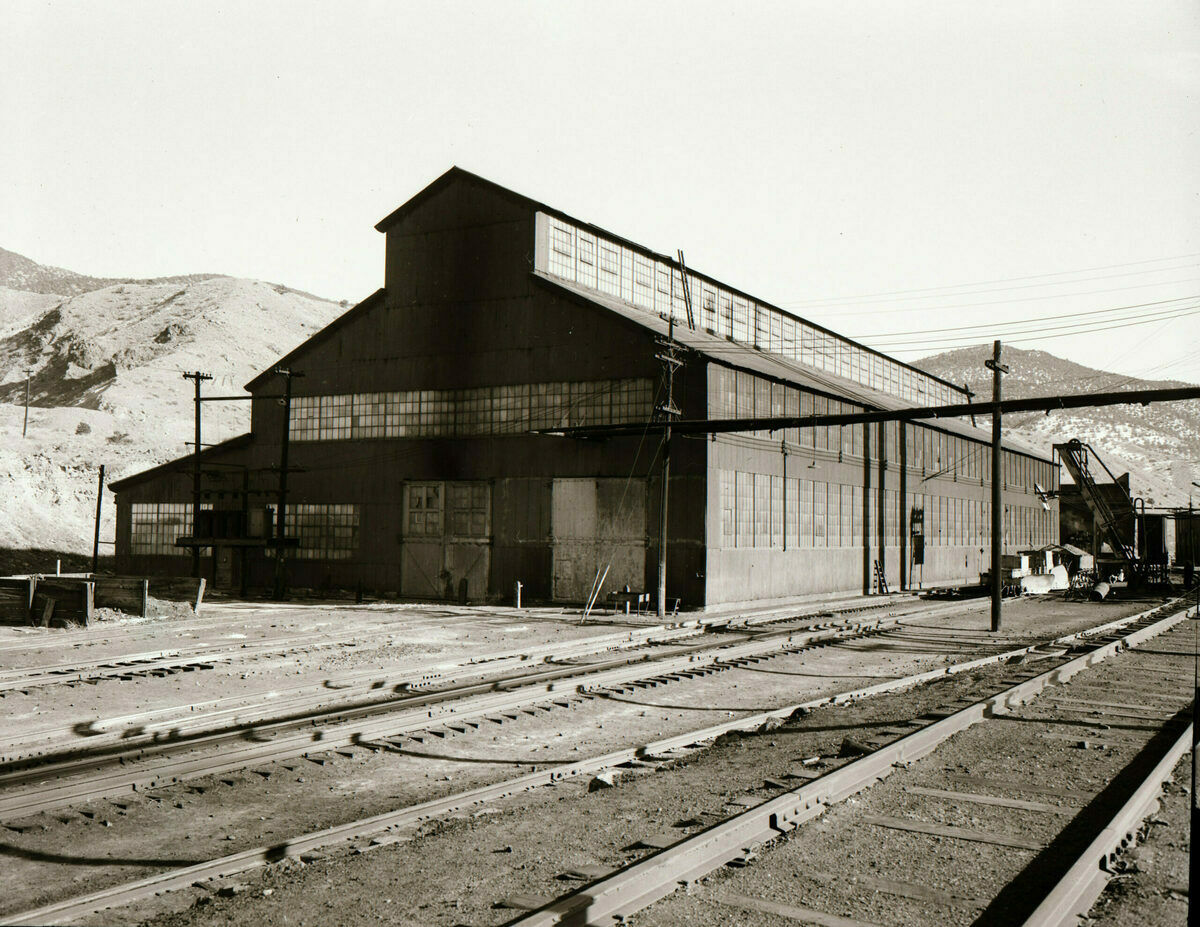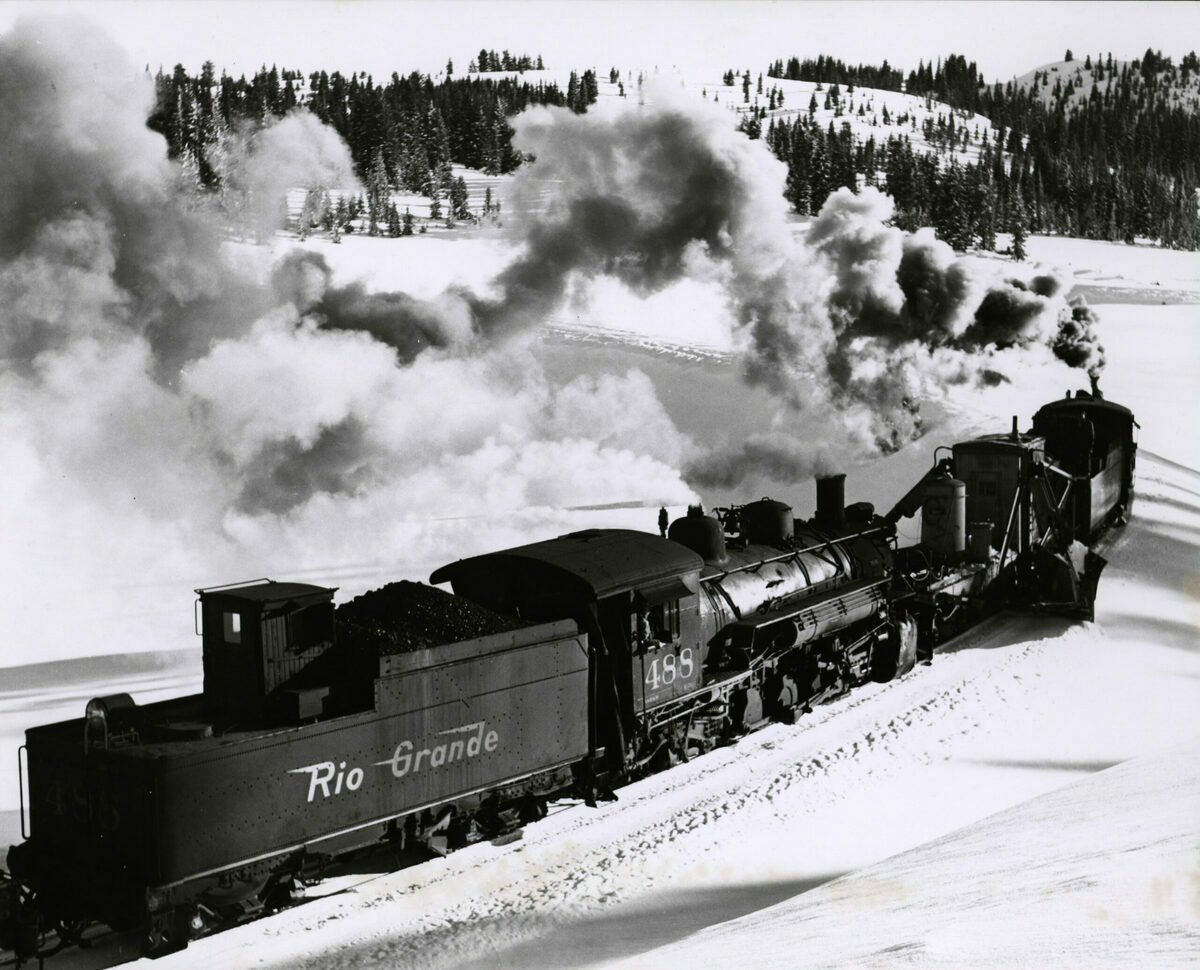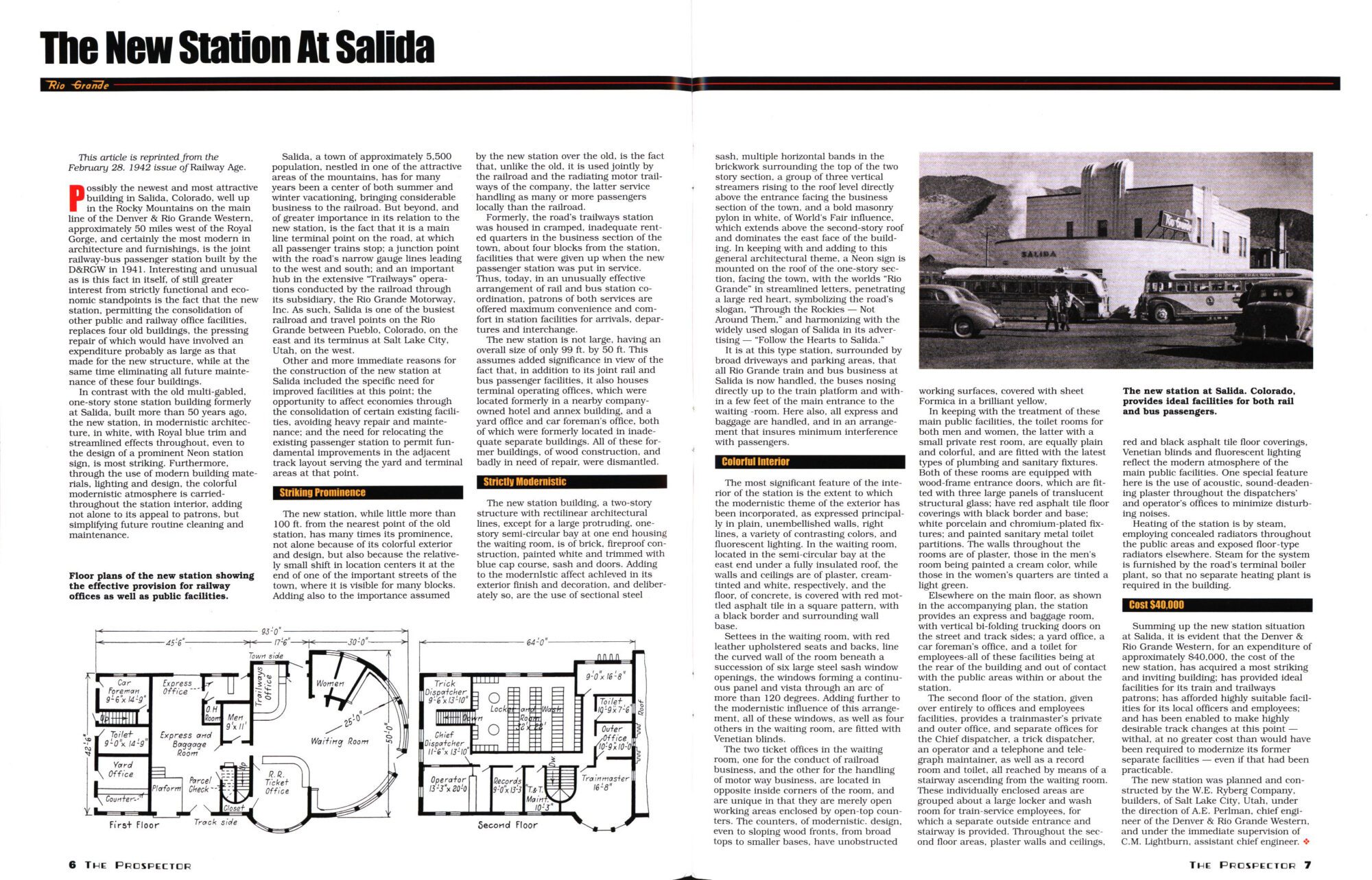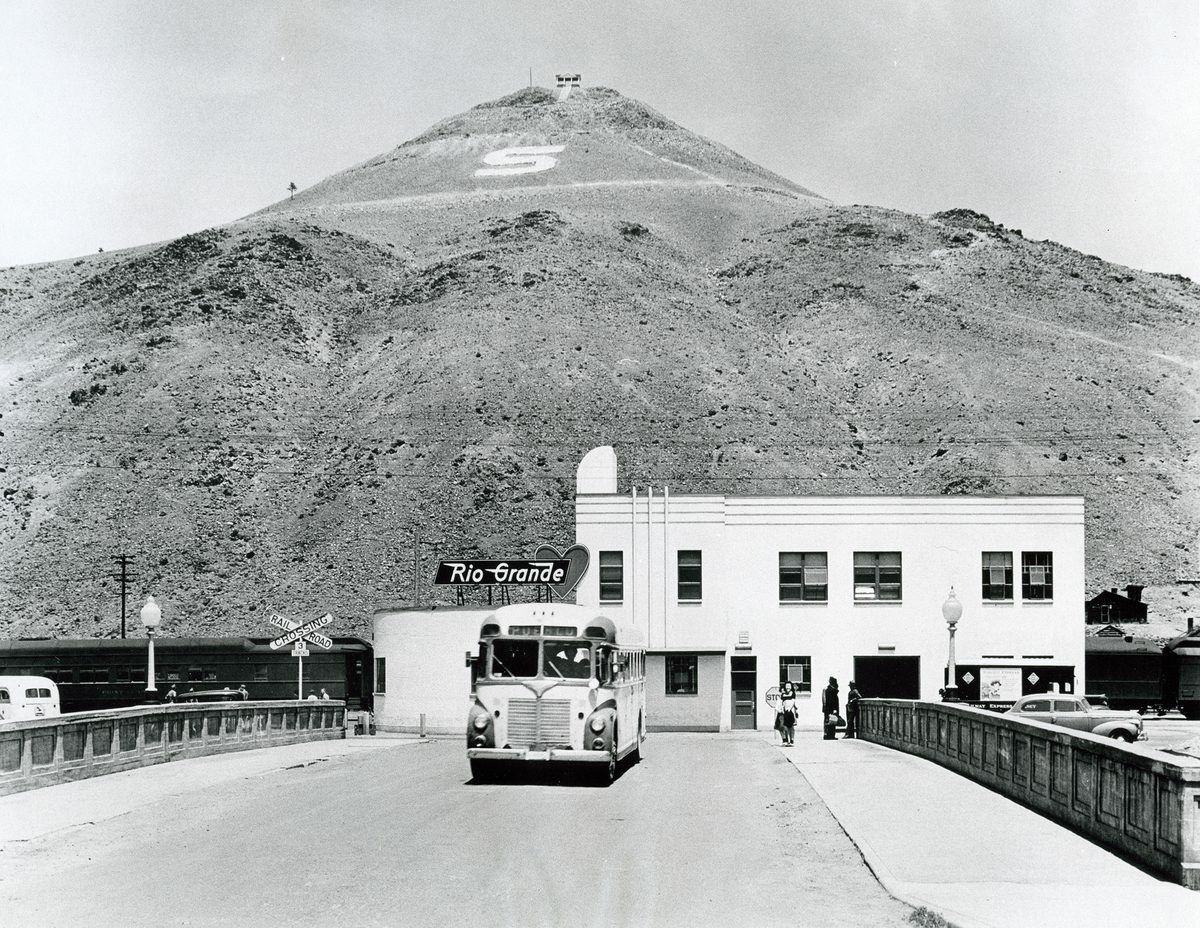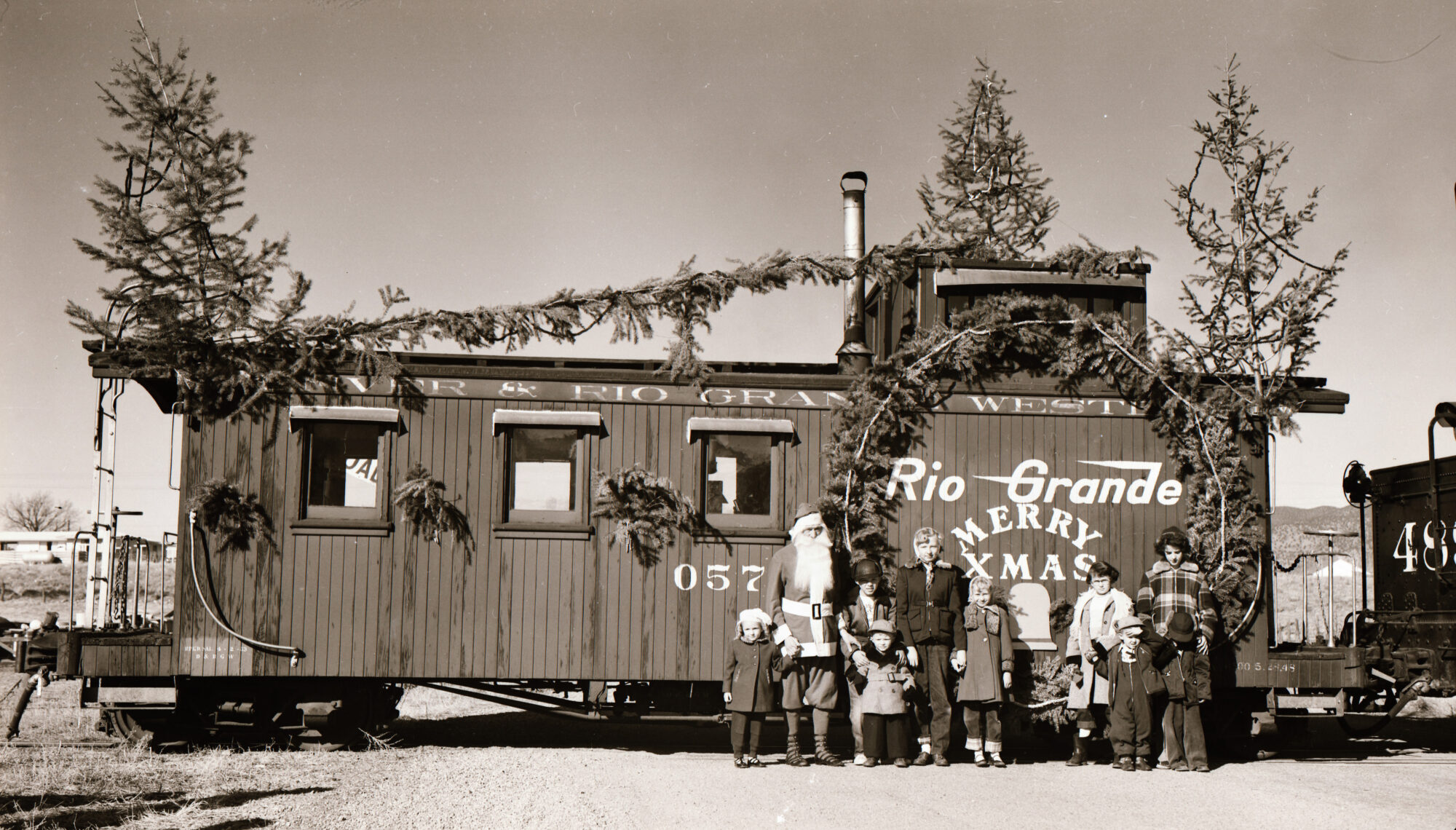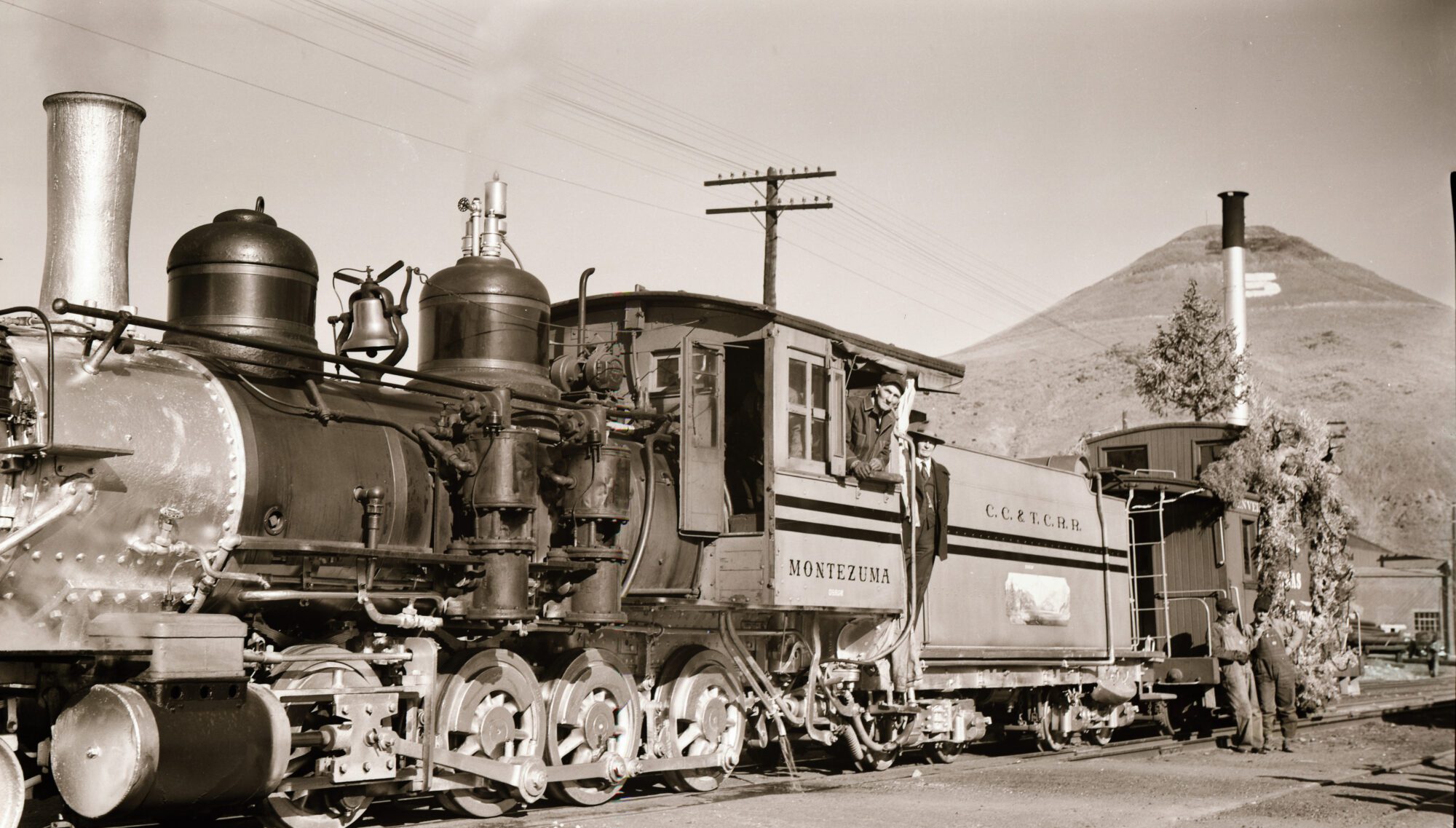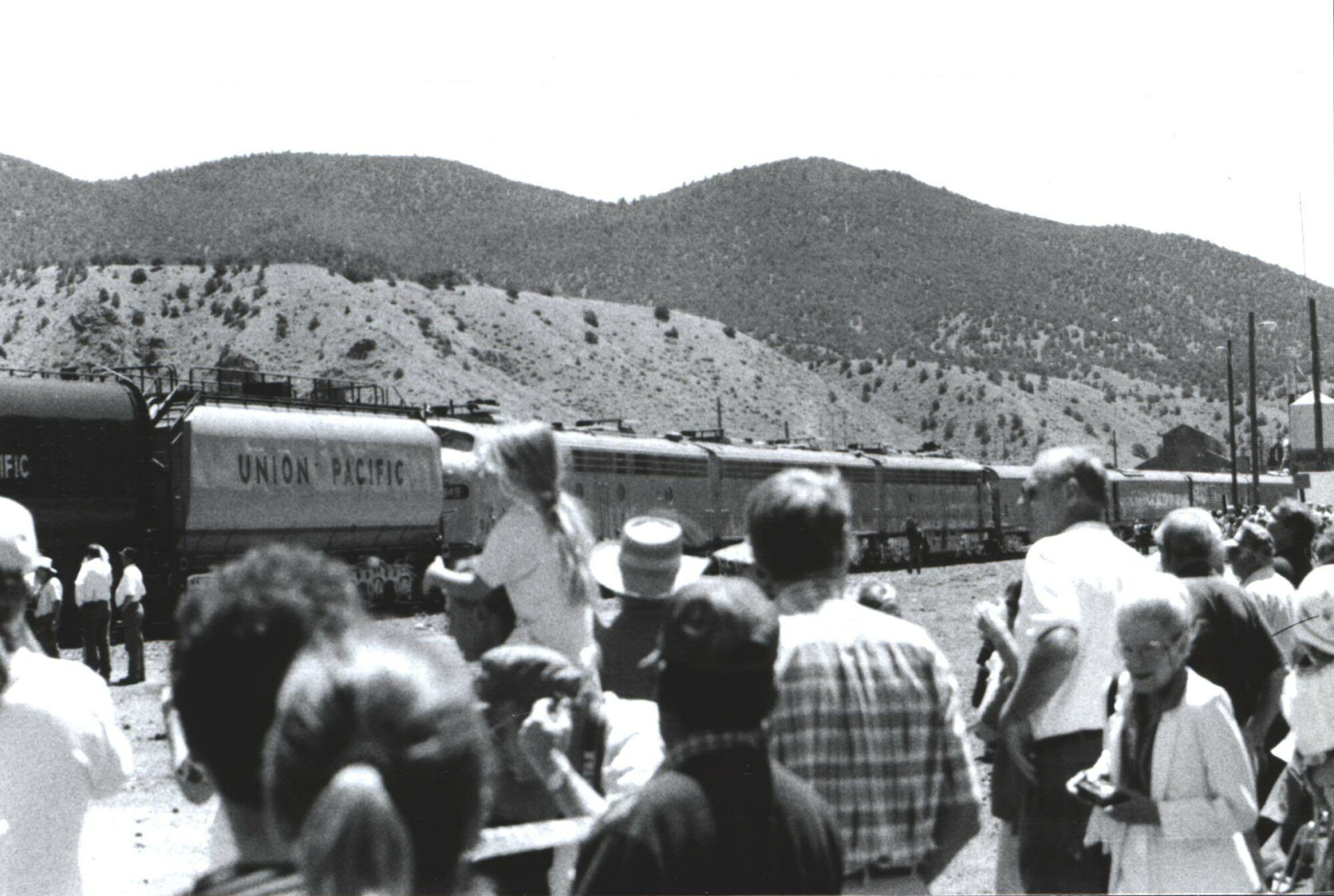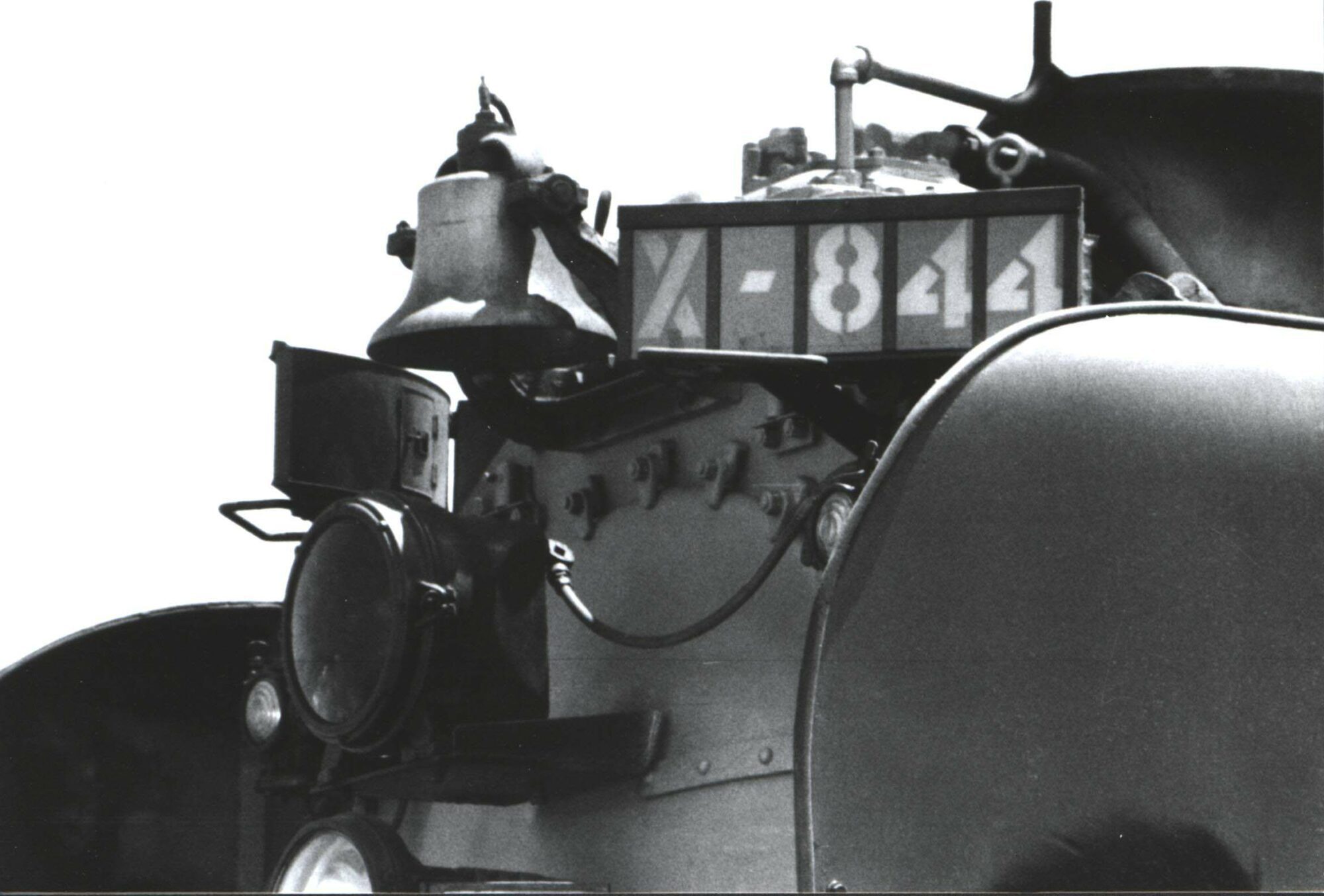The Denver & Rio Grande Railroad in Salida, Colorado
The Denver & Rio Grande Company was incorporated in 1870 and named for two points on their future railway line: Denver and Mexico City, the line traveling down next to the Rio Grande River. In 1871, the D&RG built their first line from Denver to Colorado City (today that’s Colorado Springs) and by 1872, the rails had been laid to Pueblo and Florence, stopping short of Canon City due to a dispute with rival railroad company the Atchison, Topeka, and Santa Fe.
This fight with its competitor came to be known as the Royal Gorge War. The D&RG were known for their questionable business tactics, like setting up company-owned town sites and bypassing existing town sites, essentially snuffing out their existence. Gordon Chappell describes the hostilities:
“Most of the battle was fought out in the courts … At lower levels, both railroads had judges prejudiced in their favor …The war did invole some violence; both sides hired gunfighters such as the Santa Fe’s William Barclay ‘Bat’ Masterson, and twenty miles west of Canon City, the Rio Grande forces constructed rock entrenchments such as Fort DeRemer’ to prevent the Santa Fe people from building west of the gorge.”
The court battle was official over in March of 1880 when both sides signed a compromise agreement: generally speaking, AT&SF would not build rail into the Sawatch and Sangre de Cristo mountain ranges heading west, and D&RG would not build eastward into the plains.
By May 1880, tracklayers had reached the D&RG settlement town of South Arkansas (today that’s Salida) and as a matter of course, they bypassed the AT&SF settlement of Cleora, two miles east.
About 600 people populated Cleora and once the D&RG came through, they sensed the imminent demise of their town and picked up everything they owned, buildings included, and settled in the new town of South Arkansas.
Territorial governor and D&RG civil engineer Alexander Hunt soon rechristened the town Salida, which is spanish for ‘exit’ or ‘gateway.’
By 1886, the D&RG employed 250 people in Salida and the roundhouse held 42 locomotives. The new town had become the hub for six major branch lines of the railroad.
This bird’s eye view of the Denver & Rio Grande railyards is courtesy the Salida Museum. The F Street Bridge was a metal affair at the end of F Street, and the D&RG narrow gauge bridge is visible just at right. The Salida Depot is the large building at lower right, and the Monte Cristo Hotel is just east of it. The roundhouse and shops were located further east but not visible in this image. The Denver & Rio Grande Hospital is visible at left of image.
Engine 218 on the turntable at the Denver & Rio Grande Railroad’s roundhouse. Taken by Newell Meigs. These images are from the Virgil Jackson Collection.
The Denver & Rio Grande Roundhouuse in ruins. A fire broke out in the cab of engine 419 and quickly spread to the neighboring engines, roundhouse, and machine shops. Seventeen locomotives burned, and the cost of the fire was put at $400,000. The railroad was insured for the disaster and the roundhouse and shops were rebuilt.
Denver & Rio Grande Shop Building, the last remnant of the D&RG railyard in Salida. From the Salida Museum Collection.

clip from the March 29, 1884 issue of the Salida Mail
This image is courtesy the Bob Rush Collection and shows the Denver & Rio Grande Roundhouse and Shops. C Street is visible as the first road on left, which gives an idea of how large the Denver & Rio Grande Railroad complex was.
The Art Deco Salida Depot, a combination train and bus hub, was built in 1941. It was located at the turnaround by the F Street Bridge and was razed in January 1985. The above image is from the Bob Rush Collection.
The Denver & Rio Grande Narrow Gauge Bridge was razed soon after:
The following five issues of Green Light, the Denver & Rio Grande Western magazine are part of the Juan & Magdalena Aragon Collection:
Denver & Rio Grande Western railroad workers brought Santa to town during the late 1940s and 50s. The Montezuma Express, aka the Tincup & Cripple Creek, was decorated with festive greenery and the kids would meet Santa Claus at the train and then head over to the local movie theatre where they would watch cartoons and receive presents from Santa. Both of these images are from the Salida Musuem Collection.
Online site for the Denver & Rio Grande Railroad which has useful information for the researcher:
The last passenger trains ran in the 1960s; 1967 was officially the last time a passenger train ran west or north through Salida. The last freight train to run through Salida was in 1997.

